Valplast Dentures
The Complete Guide to Flexible Partial Dentures
Discover why Valplast flexible dentures are revolutionizing tooth replacement with superior comfort, natural aesthetics, and lasting durability.

50+
Years of Innovation
98%
Patient Satisfaction
100%
Biocompatible Material
5X
More Flexible
Why Millions Choose Valplast Dentures
Valplast dentures have earned global trust thanks to more than half a century of innovation and refinement. Patients consistently report high satisfaction because the material is lightweight, flexible, and designed to adapt naturally to the mouth. Made from 100% biocompatible thermoplastic, Valplast offers a safe and hypoallergenic solution for tooth replacement. Its unmatched flexibility provides superior comfort and durability, making it one of the most reliable and natural-looking alternatives to traditional dentures.

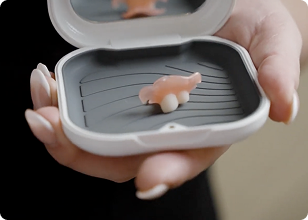
What Are Valplast Dentures?
Understanding Flexible Partial Dentures
Valplast dentures are a groundbreaking advancement in dentistry, made from revolutionary thermoplastic nylon resin that is flexible, lightweight, and virtually unbreakable. Unlike rigid acrylic dentures with metal clasps, Valplast adapts naturally to mouth movements, ensuring a snug, secure fit. This innovation eliminates common issues like discomfort, slippage, and visible metal clasps, setting a new standard for comfortable tooth replacement.
Biocompatibility
The thermoplastic nylon material is 100% biocompatible, meaning it’s completely safe for oral use and won’t cause allergic reactions or tissue irritation.
Flexibility & Strength
The material maintains its flexibility while providing excellent strength and durability, resisting fractures and breaks that commonly occur with rigid dentures.
Natural Aesthetics
The translucent pink material closely mimics the appearance of natural gum tissue, creating a more realistic and aesthetically pleasing result.
Key Benefits of Valplast Dentures
Experience a new standard in tooth replacement with dentures designed for comfort, confidence, and natural beauty. Valplast combines flexibility, durability, and aesthetics to give you a solution that feels as good as it looks.
Clinical Evidence: Studies have shown that patients wearing Valplast dentures report 85% higher satisfaction rates compared to traditional denture wearers, particularly in areas of comfort, aesthetics, and functionality.
Superior Comfort & Fit
Adapts to natural contours
No Metal Clasps Required
Blends with gum tissue, no metal clasps
Improved Eating Experience
Stable, secure, better chewing
Better Speech
Lightweight design supports clear pronunciation
Durability & Stain Resistance
Long-lasting and easy to clean
Types of Valplast Dentures
Choose the right Valplast solution tailored to your needs. Whether you’re replacing a single tooth or restoring a full smile, each option offers unmatched comfort, flexibility, and natural aesthetics.
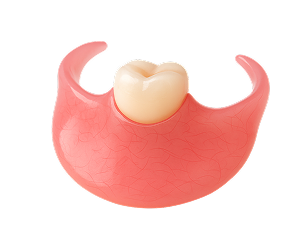
Single Tooth Valplast
- Replaces one missing tooth
- Gentle, flexible clasps
- Preserves natural teeth
- Nearly invisible fit
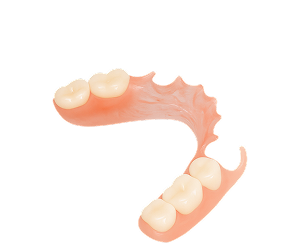
Partial Valplast
- Replaces several teeth
- Even bite distribution
- Translucent, natural base
- No metal clasps
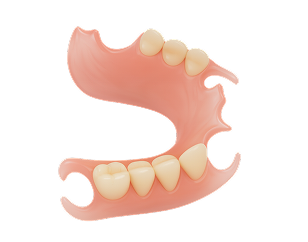
Complete Valplast
- For full upper/lower arch
- Lightweight & flexible
- Comfortable suction fit
- Natural, gum-like look
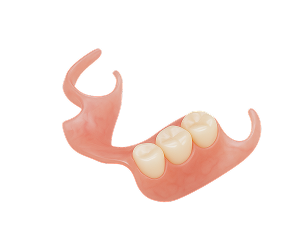
Transitional Valplast
- Temporary after extractions
- Adapts to gum changes
- Restores appearance fast
- Simple replacement later
Valplast vs Traditional Dentures
Choosing the right denture starts with understanding the difference. While traditional dentures rely on rigid acrylic and visible metal clasps, Valplast dentures use advanced flexible nylon that adapts naturally, feels lighter, and looks more natural giving you comfort and confidence every day.
Who Is an Ideal Candidate?
Valplast dentures are designed for patients who want a comfortable, natural-looking alternative to traditional options. Whether you’re missing just a few teeth, recovering from extractions, or seeking a lightweight solution that fits seamlessly into your lifestyle, Valplast offers the flexibility, aesthetics, and biocompatibility to meet your needs.
- Patients with 1–6 missing teeth
- Allergy-sensitive patients (hypoallergenic material)
- Post-extraction transitional needs
- Seniors who want lightweight comfort
- Patients with Active Lifestyles
- Aesthetically Conscious Patients
- Patients with Eating Difficulties

Treatment Process & Timeline for Valplast Dentures
Getting Valplast dentures is a step-by-step process designed to ensure the best fit, comfort, and appearance. From your first consultation to the final fitting, each stage is carefully planned to give you a confident, natural-looking smile. The entire process typically takes 3–4 weeks from start to finish, which is comparable to traditional dentures but often results in a more comfortable and aesthetic final result.
Consultation & Planning
Step 1
- Comprehensive oral exam
- Digital imaging
- Treatment design to create your personalized plan
Impressions & Try-In
Step 2
- Precise impressions and bite registration
- Followed by a wax try-in to preview fit, bite, and aesthetics
Final Delivery & Adjustments
Step 3
Your Valplast denture is delivered, fitted, and fine-tuned for comfort, function, and a natural look.
Pros & Cons of Valplast Dentures
Valplast dentures deliver a unique balance of comfort, durability, and natural aesthetics, making them a preferred choice for many patients. However, like any dental solution, they also come with certain considerations, including cost and clinical suitability. Understanding both the advantages and limitations helps ensure you choose the option that best fits your oral health needs and lifestyle.

Advantages of Valplast Dentures
Natural look without metal clasps
Flexible, lightweight, and comfortable
Biocompatible and hypoallergenic
Durable, stain- and break-resistant
Limitations of Valplast Dentures
Higher upfront cost, limited insurance
Not ideal for severe bone loss or complex cases
Requires skilled labs and special care
Less suitable for frequent adjustments
When Valplast May Not Be the Best Choice
While Valplast dentures offer comfort, flexibility, and natural aesthetics, they may not be the right solution for every patient. Certain conditions or priorities may make traditional dentures more suitable.
Making the Right Decision
Valplast dentures are ideal if you value aesthetics, comfort, and biocompatibility. Traditional dentures may be better if budget, support, or complex requirements are your main concerns. Your dentist will guide you through a personalized evaluation, helping you choose the option best suited to your oral anatomy, lifestyle, and long-term needs.
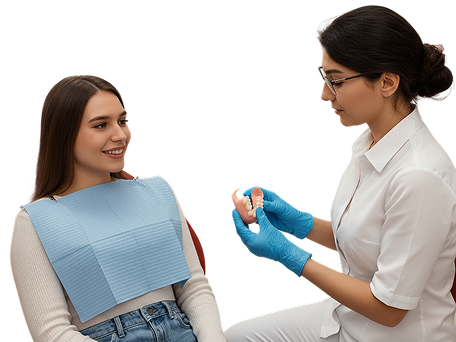
Severe Bone Loss
May lack retention where extra support is needed.
Complex Prosthetic Needs
Traditional dentures allow more design flexibility.
Budget Constraints
Higher upfront cost, limited insurance coverage.
Frequent Adjustments
Traditional dentures are easier and cheaper to modify.
Quick Links to Our Dental Solutions
Find what you need in seconds. Our quick links connect you directly to Dentulu’s most popular services and products, saving you time and keeping your smile care just a click away.
Consultation Process
Alternatives
Financial
Education
Have questions?
Get answers